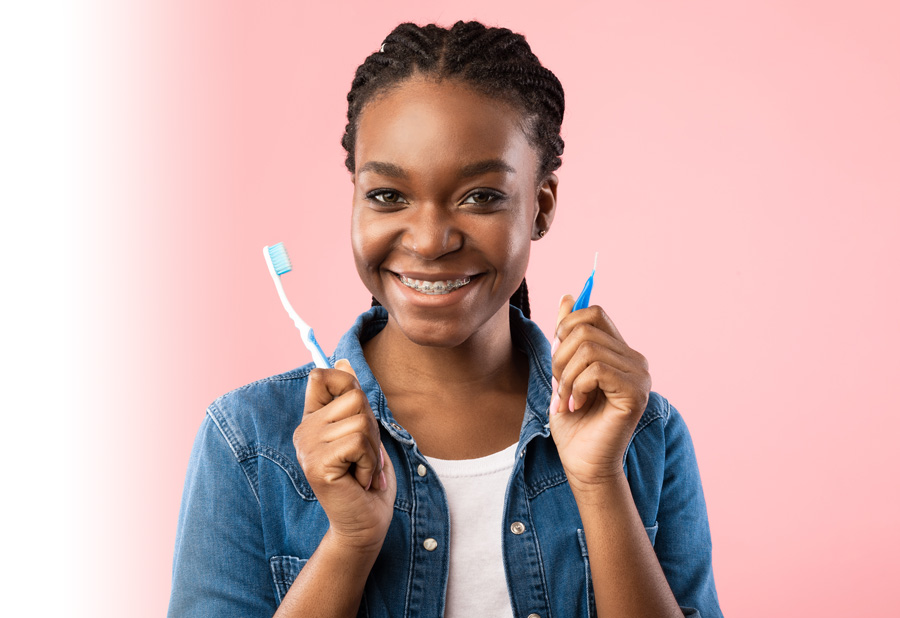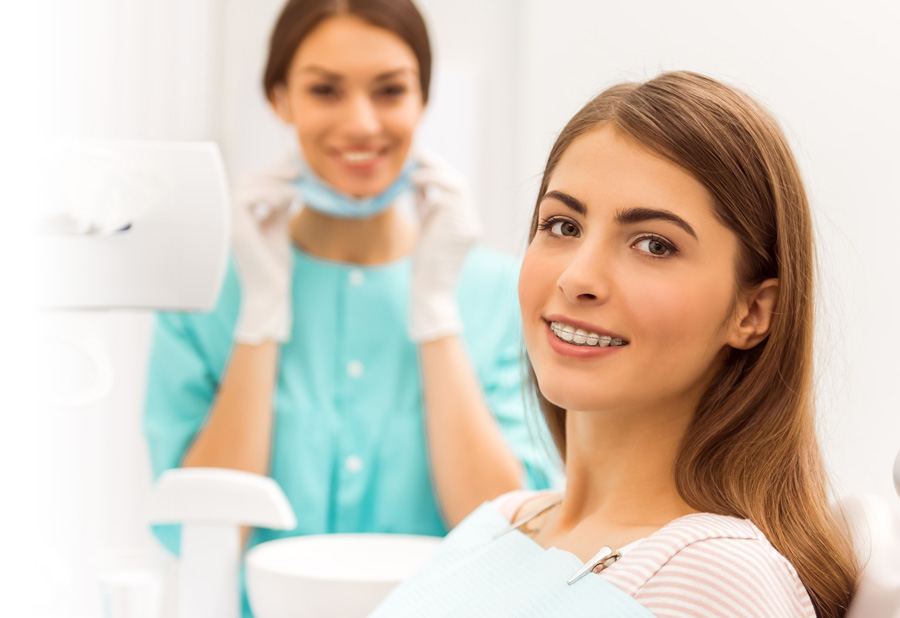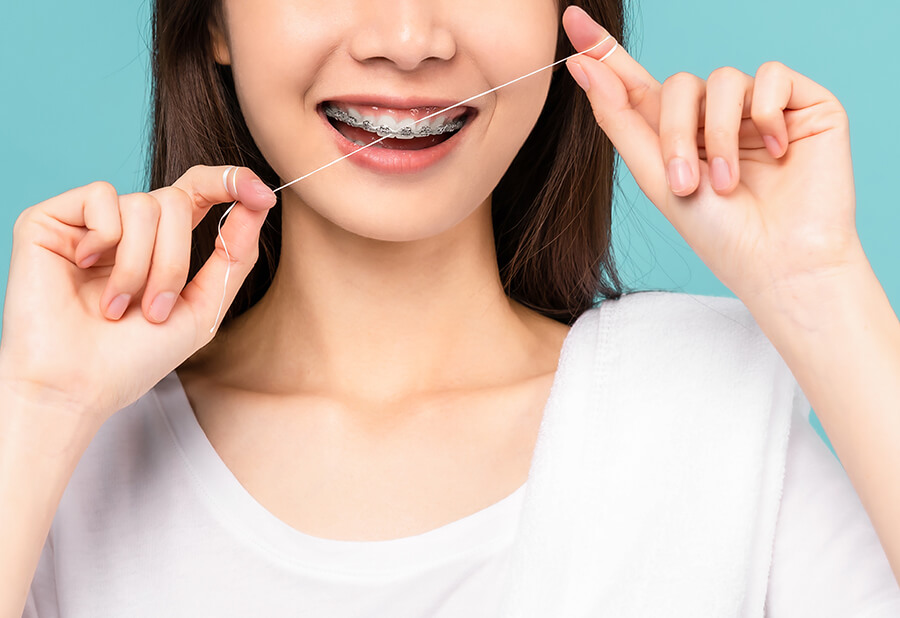
Life with braces
Once we’ve fitted you with braces, it’s up to you to keep your treatment on track. It’s important to take good care of your braces at home to ensure you achieve the desired results. Here are our top tips to ensure your brace treatment goes smoothly.
How to brush your teeth with braces
Oral hygiene is particularly important during orthodontic treatment. Braces provide extra places for food and plaque to hide, so it’s recommended to brush after every meal. If that isn’t possible, then at least 3 times a day: before work/school, after work/school, and before bed.
When brushing, make sure to do a thorough job. You can refer to our brochure for proper brushing techniques with braces. We will try to check your brushing technique during your appointments to help you avoid swollen gums or decalcification, but ultimately it’s up to you!

How to eat with braces
You don’t need to make any massive changes to your diet during treatment with braces, but there are a few types of foods you should avoid. These include:
- Hard foods like lollies or ice chips that can dislodge your brackets
- Sticky foods like bubble gum or toffees that can pull your braces off your teeth
Hard fruits, vegetables, and crusty sandwiches can be eaten with a little assistance. Instead of biting straight into them, try cutting them into bite-size pieces first.
If you aren’t sure what you should or shouldn’t eat during treatment, feel free to ask our staff.

How appointments work
We will need to see you every 6-8 weeks during treatment for adjustment appointments. We try to make most of these appointments after school, but we may need to schedule longer visits during a lunch break. We will do our best to accommodate your schedule.
Remember to keep your regular six-monthly dental appointments all throughout your treatment as well to ensure the health of your teeth.

The brace glossary
Your braces are comprised of many different pieces, and in order to take proper care of them, it’s important for you to understand what they are!
Brackets
Brackets are the small metal or ceramic pieces that are bonded to your individual teeth with a special adhesive.
Bands
Bands are thin loops of metal that are carefully fitted around your molars and cemented into place. They give us a more sturdy grip on the tooth.
Archwire
An archwire is the main wire that runs through your brackets and is tied in place with tie wires or modules. This archwire is what we adjust during adjustment appointments to help guide your teeth into position.

Elastics
Elastics are small rubber bands that provide force to help your teeth move.
Modules
Modules are rubber rings that hold the archwire to your brackets. They come in a variety of fun, customisable colours that you can switch out each visit.
Separating elastics
Separating elastics are the first step in your orthodontic treatment. They are placed between your back teeth to make room to fit the bands comfortably around your molars - at your next visit a week or so later.
Tie wires
Tie wires are small wires we use to attach to your archwires to your brackets. They are twisted into a “pigtail” and tucked under the archwire, but sometimes they can come dislodged during eating or brushing. You can use a pencil eraser or your fingernail to push them back into place.

What to do if your braces break
Breakages are not common, but they do happen! While not dangerous, breakages can delay your treatment, so it’s important to contact our team as soon as possible for an emergency repair appointment.
If something does break:
- Remove any loose pieces from your mouth (and bring them with you to your next appointment)
- Use dental wax to prevent any sharp edges from irritating your cheeks or gums
- Use a salt water rinse for any ulcers that may occur (1 tsp salt to ½ cup water)
- Contact our team to arrange a repair appointment

Have more questions about braces?
Reach out to the Ipswich Orthodontics team at 07 3812 0865 or schedule a consultation in central Ipswich to get started on treatment.





















